Stunning Purple Perennials: Add a Splash of Majesty to Your Garden
Who else has an addiction called gardening? Every weekend I find myself at the garden center to look for more flowers, which is one thing I don’t really need right now, or do I? Today’s trip to the nursery revealed the most dainty bloom of purple perennials – the lovely pincushion flower. When I see something so light and airy, but majestic, I find myself saying “I need this in my life.”
Each of us is drawn to certain color palettes when it comes to gardening. I lean toward pinks and purples with a shot of orange or yellow for warmth and vibrancy. Today I’m sharing some of my favorite purple perennials that I’ve found to be easy to grow.
1. Lavender
You can’t have purple in your garden without some form of lavender, whether French or English. The bloom is light and airy while the fragrance is intoxicating. Clip this charmer and hang it upside down to dry. You can then enjoy its fragrance in the home for months to come. I have a few of these planted in the rock garden by my pond, and also out in my vegetable and herb garden. Plant lavender in full sun with well-drained soil.

2. Allium
Clump-forming allium, also known as ornamental onion, is truly impressive in the garden. Delightful, purple balls grow atop sturdy stems and come in a variety of heights. My mother loved these for the architectural element they add to the landscape, and likewise, I share her love of them. Like lavender, allium also enjoy full sun and well-drained soil. I have some by my pond and also out in the herb and vegetable garden. They’re such a joy to see every year and the bumblebees love them! They do spread if you care for them properly. I had to move one early this spring that had spread and it’s doing great after being transplanted.
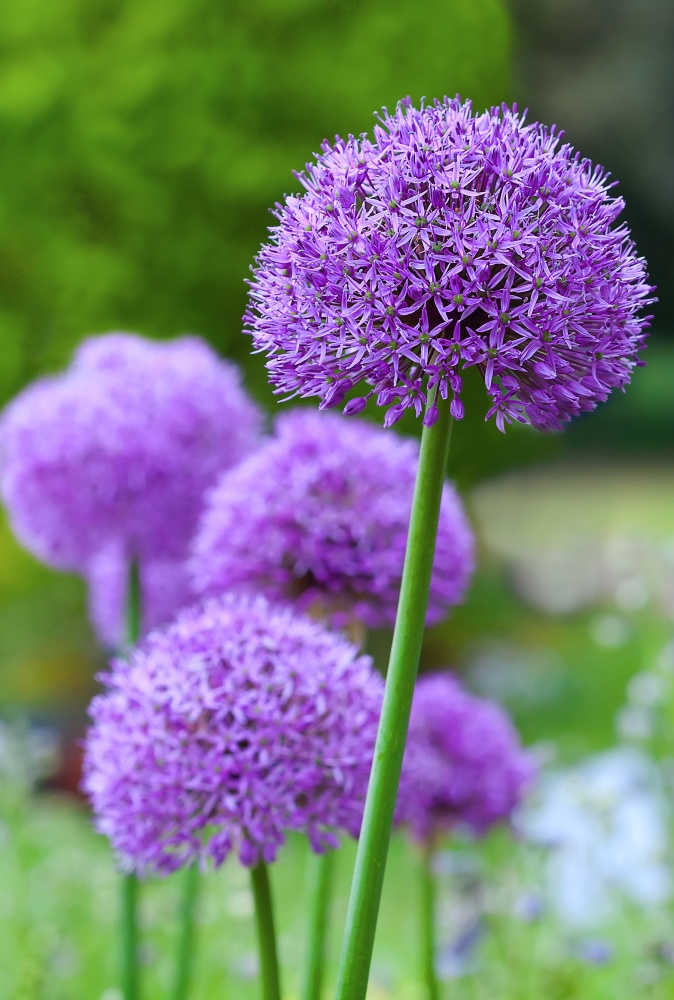
3. Anise Hyssop
Another bee and butterfly-loving flower, hyssop is dainty and a bit taller than some of the other flowers in my garden. I placed it in the vegetable and cutting flower garden to attract pollinators. Hyssop has fragrant leaves and will self sow, which is why I treat it as a perennial. I’ve had it come back in my zone 5 garden.
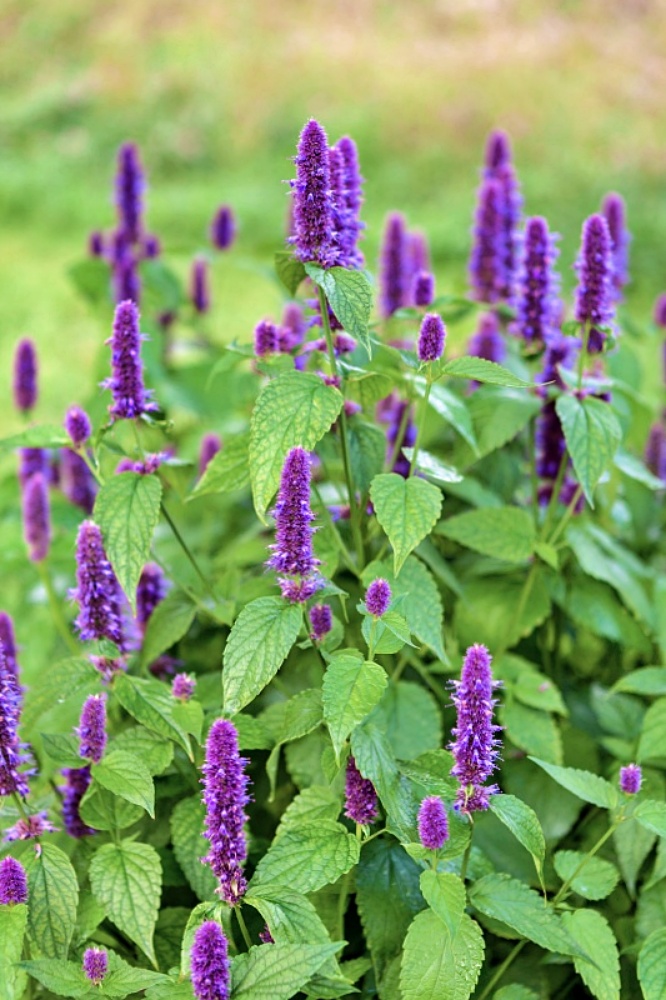
4. Pincushion Flower
This is the flower that inspired this post about purple perennials. I love it’s bluish-hued bloom that sits atop a long stem. I need to plant a batch of these so I can enjoy them fluttering in the breeze like butterflies. Like the other flowers on this list, pincushion likes six to eight hours of sun per day in well-drained soil. Be careful not to overwater as it’s prone to root rot. Cut back faded blooms to encourage more flowers.
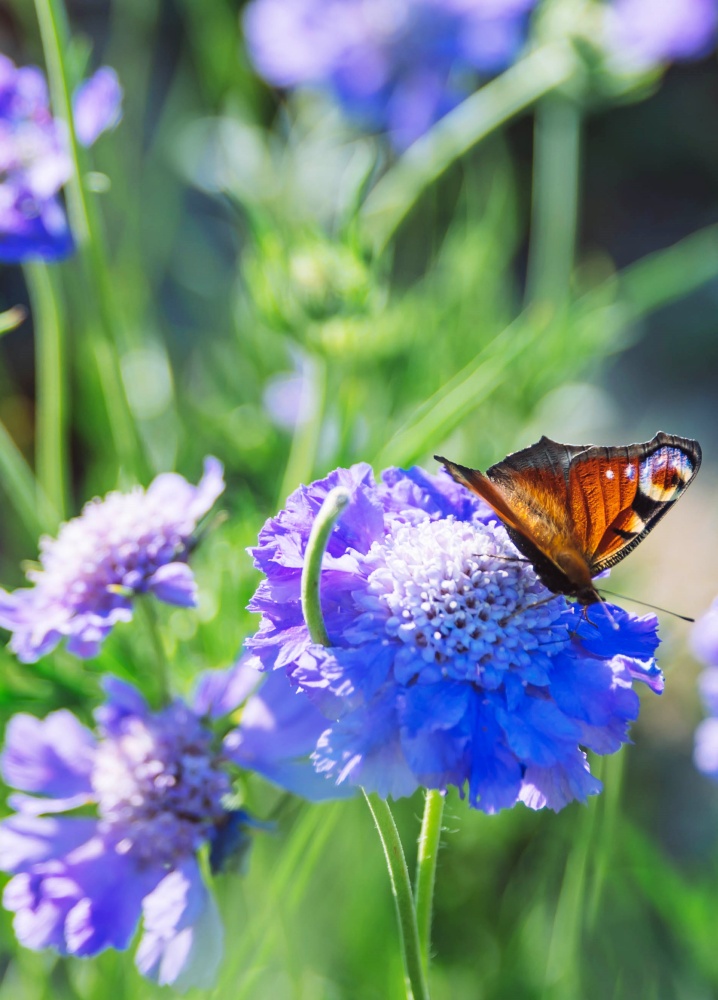
5. Gayfeather
Also known as Blazing Star, even the names of this flower sound like fun! I’ve had gayfeather in my garden for several years now and it always returns healthy and perky. Spike-like flowers grow atop leafy stems, producing a pretty show in the garden. This fun flower needs full sun and is drought tolerant (always a bonus in dry summers). It blooms a little later in the summer through fall.

6. Lupine
Has anyone else had a love affair with lupine? You’ll find them in white, pink, and purple shades. Their impressive flowers draw attention in the garden and passersby will always ask me what they are. I was first introduced to lupine when I read the book, Miss Rumphius, to my children. She was known as the lupine lady and that’s the day I declared I’d always have lupine in my garden. It’s one of my favorite purple perennials. Deadhead the flowers because they’re not too attractive when they fade. Lupine prefers full sun but will tolerate partial shade.

7. Bee Balm
Another great choice for pollinators, Bee Balm is available in a few colors. The blooms are so unique and interesting. It begins to flower in July and will continue to flourish through fall. Cut back dead flowers to encourage new blooms. Bee Balm enjoys full sun but will tolerate partial shade. Plant it wherever you want to attract pollinators.
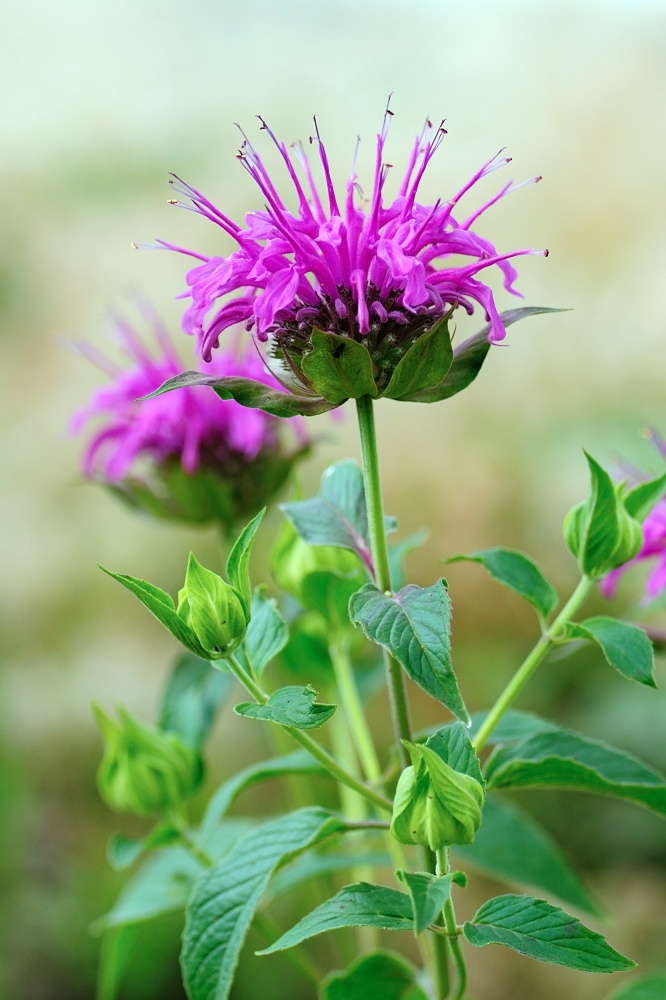
8. Clematis
Clematis is a vining flower that’s super easy to grow and is available in a wide variety of flowers and colors. They’re also relatively inexpensive and make a colorful display for anyone on a budget. Typically grown up a trellis or scrambling over a fence, clematis can be allowed to scramble downward. I planted one near the top of my pond’s waterfall and I let it cascade down the rocks right next to the water. When caring for clematis, read the grower’s tag. Some like full sun, others prefer shady areas. Also, some should be cut back in the fall, and others left as they are since new growth will appear on old wood.

9. Delphinium
If you love the look of a cottage garden, Delphinium is the flower for you! Its vintage vibe evokes an older garden in England due to its romantic appeal. This tall flower can sometimes flop over so plant it where you can stake it or secure it against a structure. It’s a little more high maintenance than other purple perennials on this list, but the little bit of work is worth the beauty they provide. Delphinium prefers sun, but enjoys cooler summers. I’ve found that morning sun with later afternoon shade produces the best results.
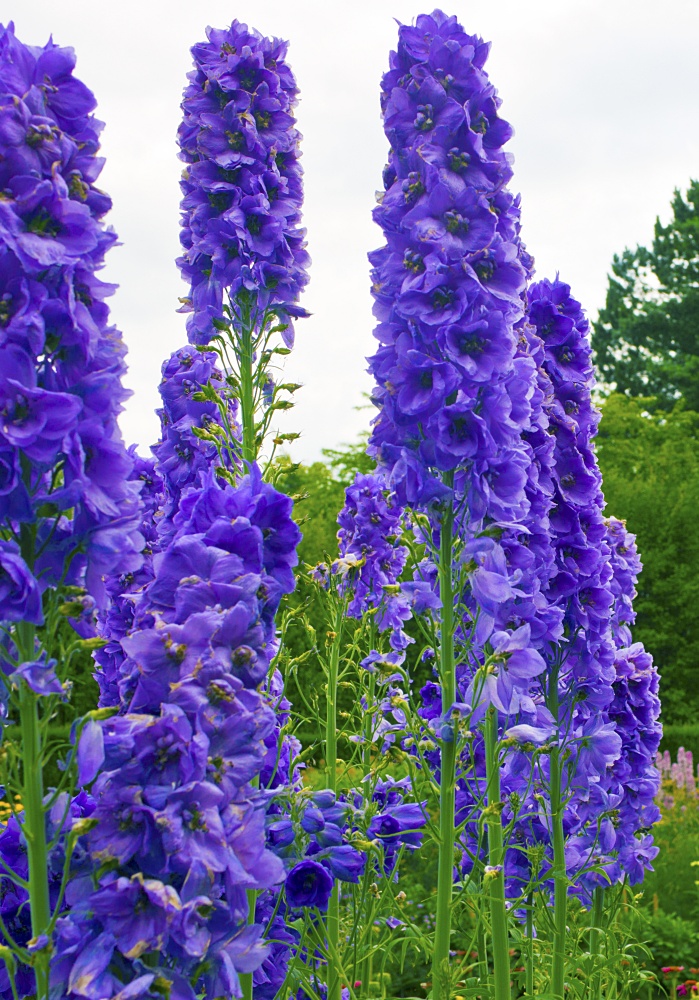
10. Morning Glory
Technically not a perennial in my gardening zone 5, I’m adding Morning Glory to this list because it profusely re-seeds every year. So once you plant this blooming vine, you’ll have these pretty blooms coming back – often times in places where you’d rather not see them. They’re fast growers once they get going and tend to take over a lot of real estate, often climbing over bushes and nearby structures. If you see them sprouting where you don’t want them, simply pull them out. Plant your Morning Glories in full sun but in an area protected by hot, dry winds.

Do you have any favorites on this list of purple perennials?

I am going to look for some morning glory and moon flower seeds to plant to climb up an outside lamp post. This will cover both day and night.
Great topic and examples. Plus, purple and green compliment each other, so it’s a win, win. Thanks for the great article.
Love them all! Growing up we had a purple clematis growing on a trellis and over the garage. Was so pretty.
Loved you mentioning the children’s book “Miss Rumphius”. It was a favorite of my own kids, and I always appreciated the life lesson of, leave the world more beautiful, for you having been it. My grandchildren now have a copy. I had completely forgotten about adding Lupines into the garden. But I will now.
Agapanthus is beautiful!